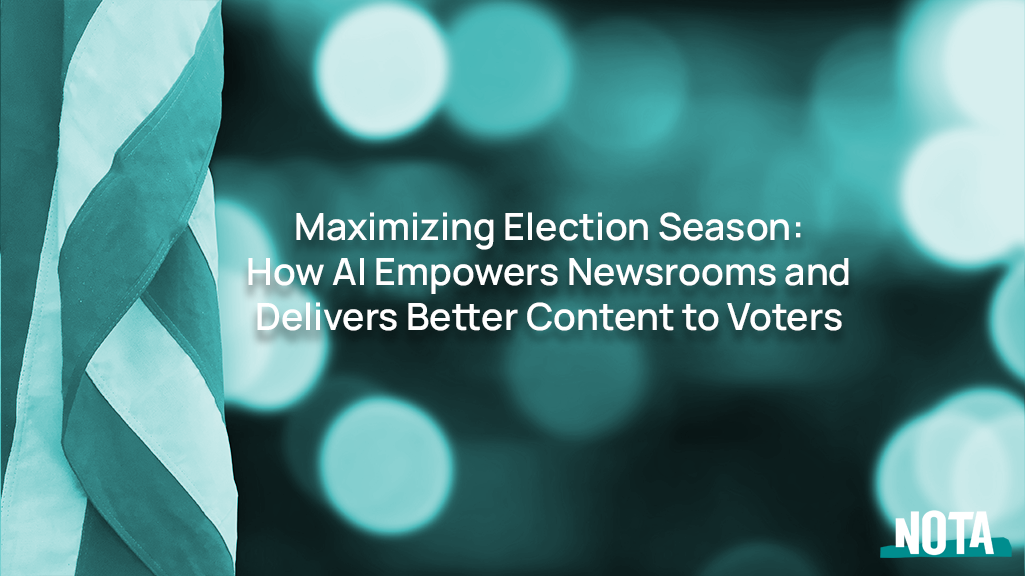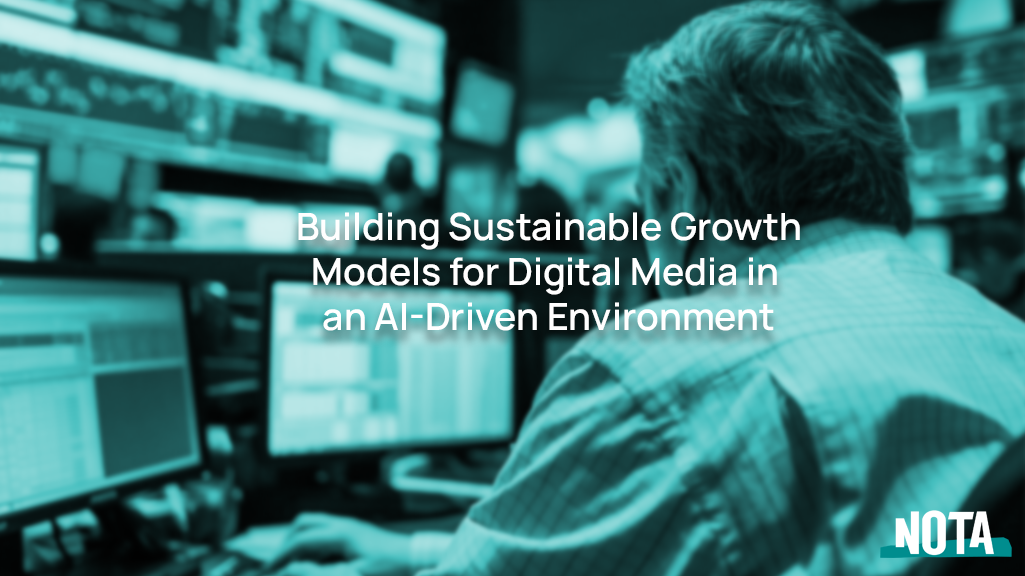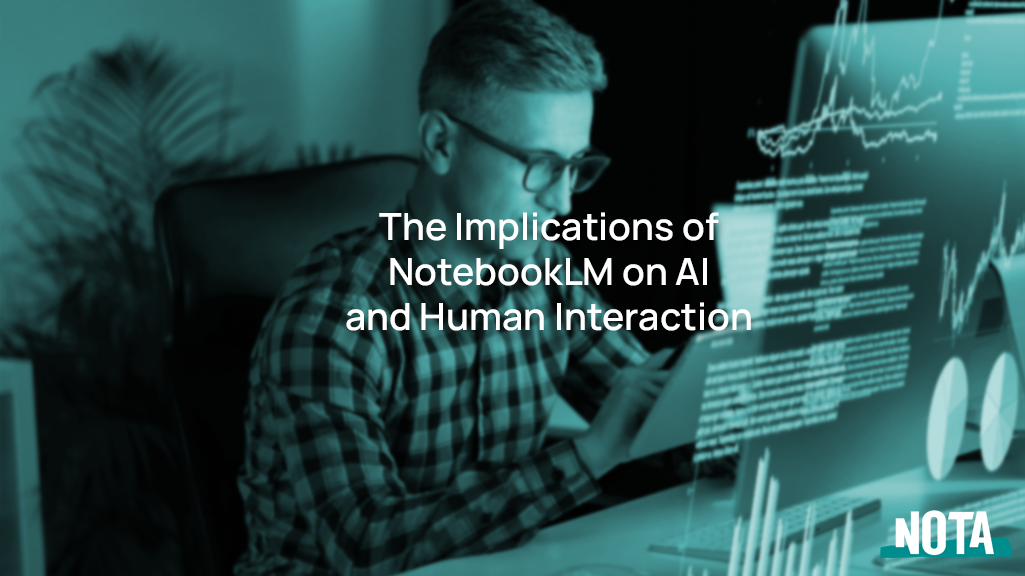Executive Summary
Newsrooms can leverage AI to maximize election season by delivering personalized content to voters, tracking voter sentiment in real-time, and optimizing content for engagement and revenue growth. AI tools can analyze data from user behavior, preferences, and historical engagement to provide tailored content to specific reader groups, and track shifts in voter sentiment to make data-driven editorial decisions. Additionally, AI can streamline workflows and diversify content formats, fostering brand affinity and ensuring audiences stay informed and engaged throughout the election cycle.
- AI tools like Nota help newsrooms personalize content, enhancing reader engagement during election season.
- AI tracks voter sentiment and polling data in real-time, aiding accurate and timely reporting.
- Personalization and sentiment analysis boost engagement, driving revenue growth through increased time-on-site.
____________________________________________________________________________
With just weeks to go until the election, the race is on for more than just the candidates. For news publishers, election season isn’t just another event on the calendar – in reality, it’s their Super Bowl. In fact, research from eMarketer found US political ad spending will reach $12.3 billion in 2024, up from $9.6 billion spent in 2020. Coinciding with this, Pew Research Center found that 58% of Americans are very closely, or fairly closely, following 2024 election news. This is up from 52% in April 2020.
Elections represent a critical moment that can make or break readership numbers and revenue. However, it’s about more than just business – publishers also have a societal and cultural responsibility to ensure Americans have access to the facts, objective points of view and necessary voter information. So, how can newsrooms seize this moment?
Here are some AI strategies that can transform news outlets’ election coverage playbook, while ensuring they provide reliable content to audiences.
Personalization is Expected
Generic content doesn’t cut it anymore. Supporting this notion, McKinsey & Company research found 71 percent of consumers expect companies to deliver personalized interactions. And 76 percent get frustrated when this doesn’t happen.
We’re in an interesting moment, with AI-powered tools like Nota emerging on the market that help personalize and reformat human-created content into multiple different text, audio and video formats – making sure a publication’s audiences receive the most applicable content, in channels and styles that they prefer. Publications can now offer personalized reader experiences at scale that keep audiences informed and engaged throughout the election cycle. AI-powered segmentation enables outlets to go beyond generic political reporting and deliver curated content to specific reader groups.
Publications can actually deliver content that resonates with a specific reader’s interests and political leanings. For instance, voters can access vital, localized reporting, as well as in-depth analyses of national trends. All this is done seamlessly, by analyzing data from user behavior, preferences, and historical engagement.
AI tools don’t just analyze data – they turn it into action. By understanding user behavior, platforms like Nota can help publications recommend tailored content to keep readers engaged and informed. Another great tool that helps newsrooms monitor and optimize content performance is Chartbeat. Together, these platforms enhance the reader’s experience – all while driving ad revenues through increased impressions.
Personalization isn’t just a perk – it’s a necessity. Audiences are clear in their expectations, and now is the time for publications and media companies to update their approaches.
Tracking Voter Sentiment Like a Pro
In alignment with personalization, it’s critical media companies have the ability to curate their offerings based on voter behavior.
One of the most valuable ways AI supports media companies today is by helping track and interpret voter sentiment and polling results in real-time. AI excels at sifting through enormous datasets, identifying patterns and trends that may not be immediately visible to human analysis. For instance, AI can analyze public opinion surveys, historical polling data, and voter registration statistics, providing newsrooms with highly accurate forecasts on how key demographics or regions are likely to vote.
AI can also monitor shifts in voter sentiment by analyzing discussions across social channels and news article comments. This data enables media companies to track the evolving attitudes of voters toward candidates, key issues, and campaign developments. If AI tools like Chartbeat detects a shift in sentiment around a particular candidate or policy, it can alert newsrooms, helping them stay ahead of trends and adjust their coverage accordingly.
Ultimately, these capabilities mean more accurate reporting, empowering newsrooms to make fast data-driven editorial decisions. It’s crucial to stay ahead of the narrative and deliver timely content that speaks to what voters are discussing right now.
Revenue Growth through Engagement
Coupling personalization and audience sentiment lays the foundation for enhanced revenue opportunities through higher engagement and increased time-on-site. Notably, eMarketer found that over half (54 percent) of marketers worldwide reported better brand engagement because of increased personalization. The correlation between personalization, engagement and time-on-site is clear.
AI can help media companies achieve this by recommending additional related stories, videos, podcasts, or interactive tools based on the user’s preferences and past behaviors. This seamless flow of relevant information keeps readers on-site longer, maximizing the number of ad impressions served during their session.
Additionally, once the election is over, AI can sift through previous election coverage to deliver insights on current dynamics. Plus, it can shine a light on relevant archived content that connects to today’s stories.
More Efficient Newsroom Operations
Efficiency is key to delivering content that meets the evolving expectations of audiences. By harnessing AI, newsrooms can enhance depth in their reporting by providing comprehensive analyses and diverse viewpoints that cater to the varied interests of voters. Context is equally vital; AI tools can draw on historical data and current events to ensure the information presented is relevant and enriching, helping readers understand how past elections shape today’s political landscape.
Continuity in coverage ensures audiences stay informed and engaged throughout the election cycle, enabling news outlets to create narratives that resonate with readers day after day. Offering options is also essential; AI empowers newsrooms to diversify content formats—be it articles, podcasts, or infographics—allowing audiences to consume information in ways that suit their preferences.
Election Season is an Opportunity
As election season ramps up, newsrooms face an incredible opportunity to drive engagement and deliver critical information to voters. With AI tools like those from Nota, publishers can efficiently tailor their coverage to meet audience needs—offering personalization, real-time sentiment analysis, and optimized content across multiple formats. This isn’t just about staying relevant during a busy election cycle; it’s about using AI to deepen connections with readers, streamline operations, and ensure voters receive accurate, engaging, and insightful news. At Nota, we believe empowering storytellers with innovative tools ensures that important stories don’t just get told—they make an impact.



